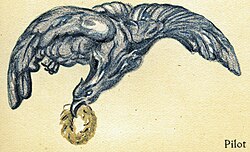Elite sport performance/Imagery/Imagery
Imagery
=== Take a ride on a bobsled ===
|
|
|
A free content video streamed from Vimeo
Avoid deletion: Upload a free format version of this video to the Commons |
Watch the first-person perspective video above.
It gives you a sense of the high speeds associated with bobsleigh. Imagine that experience in Olympic competition; the adrenaline pumping, the gravitational forces pulling on your body, and the sheer noise of the sled on the ice.
Bobsleigh involves a team of two or four athletes hurtling down an ice track in a metal capsule as quickly as possible over a series of runs. It demands a powerful push start, skilful piloting, and efficient weight distribution and drag reduction from the rest of the team.
Winning margins in bobsleigh often come down to a few hundredths of a second, and a single mistake can prove the difference between winning a medal and finishing down the field.
Utilising imagery as a psychological skill
- Peter (left) pushing the sled
- Using imagery to rehearse the drive
Imagine yourself as a bobsled pilot. From watching the video above, it's clear that you would need to know every turn by heart and the correct line to steer. What psychological techniques could help you with this?
Imagery can be used to mentally rehearse performance by creating an imagined experience, preferably using all the senses, of a real competition. In this module, we will look at the where, when, why, what, and how of imagery in elite sport.
Professor Peter Terry was the GB team psychologist for 10 years and formed part of the support team at three Olympic Winter Games. To test his mettle during his very first weekend with the team he was selected to compete in the national championships. That's him far left pushing the bobsled.
In the picture on the right, you can see imagery in action. A bobsled driver is visualising his drive down the track just before he goes out to perform. He is mental rehearsing, effectively pre-programming, the whole run, every twist and turn of it, almost as though he were driving it for real.
In this topic you will:
- Explore the nature of imagery.
- Understand the importance of WYSIWYG (what you see is what you get).
- Learn some imagery techniques for use in different contexts.

